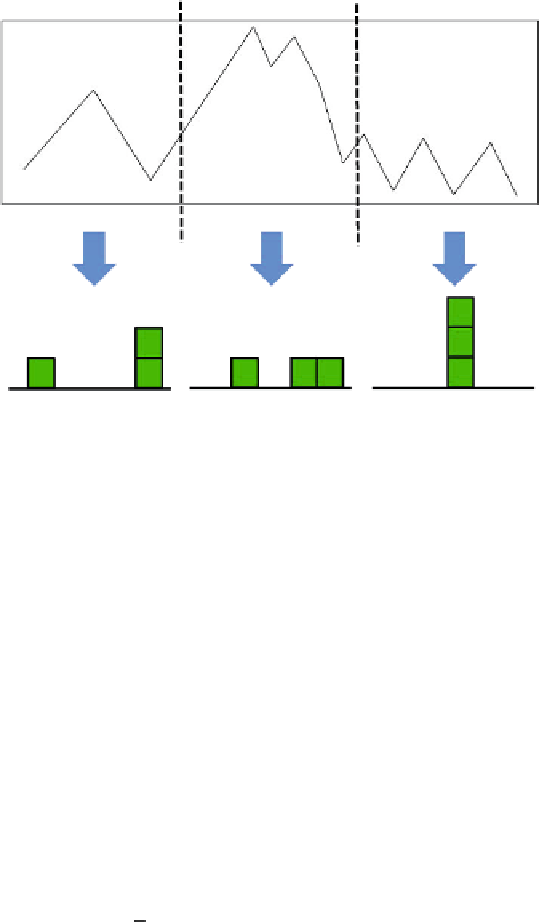Information Technology Reference
In-Depth Information
Fig. 4.
The procedure of temporal bag of words
3 Bag-of-Words Model with Temporal Information
As presented in the previous section, Bow models utilize the distribution of local
patterns (or histogram of codewords) to provide a more robust data representa-
tion for time series data. However, describing time series data by the histogram
might lose the temporal information within a time series data instance. A local
pattern appears in the early or late stage within a time series data instance might
have different information for classifying an instance. For example, considering
a opening/closing trajectory (as shown in Fig. 5), a spike appear in late stage
might provide more discriminative information for the classification. In BoW
models, the local patterns are aggregated without considering this temporal in-
formation. That is, some informative local patterns, which appear in a particular
period, will not be emphasized in BoW representation models.
To consider the temporal information with BoW models, we split a time series
data instance into
n
intervals (segments). Suppose we have a time series data
instance
x
i
=(
x
1
,x
2
, ..., x
p
). The instance
x
i
will be split into
s
1
,
s
2
,...,
and
s
n
where each interval have
n
timestamps (i.e.,
x
i
=(
s
i
1
,
s
i
2
,...,
s
i
p
/
n
)). After split-
ting time series data, we apply BoW models to each interval. More specifically,
for the
j
th interval, we collect subsequences from the
j
th interval of all training
data, and generate a codebook for this interval. We can have local histogram
h
j
to represent
s
j
for the
j
th interval (see Fig. 4). Our temporal BoW model
consider the histogram of local patterns with different stages (i.e., different in-
tervals) within time series data. By comparing with applying BoW models to
full sequence, our proposed method could capture the behaviors of the data at
different stages, and provide a more discriminative ability for the classification.
In our experiments, we also demonstrate that taking the temporal information


Search WWH ::

Custom Search